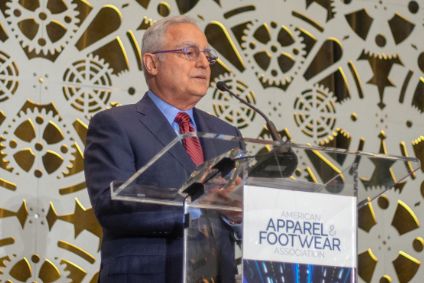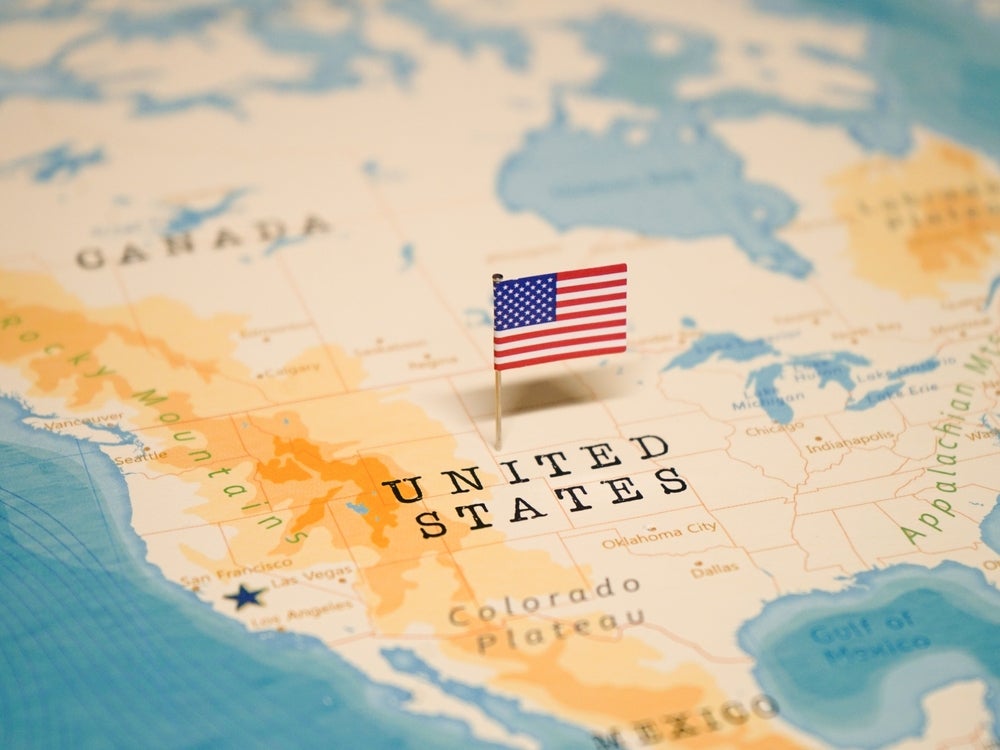
Taking the theme ‘Demand and Deliver,’ this year’s annual American Apparel & Footwear Association (AAFA) Executive Summit mulled American trade policy, along with finding creative ways to thrive amid an ever-changing retail landscape.
The president and CEO of the American Apparel & Footwear Association (AAFA) has said that he did not only expect by the Trump administration’s aggressive stance on tariffs – but that its protectionism may now start to ease as the 2020 election looms.
Rick Helfenbein says he predicted the president’s top trade consultants would eventually “weaponise” tariffs and that such a move would usher in some chaos for the industries he represents in Washington DC, where AAFA held its annual conference last week.
“I pulled out the talk we gave to you one year ago today, and I said, ‘I’m worried,'” Helfenbein told delegates. “I said to you, ‘If you are in the apparel business, watch out. If you are in the footwear business, watch out. If you are in the accessories business, watch out.”
He has since delivered his stump speech on nearly 30 television shows (“The president likes TV,” he says), written dozens of opinion articles and met with Washington leaders to get his point across: “Tariffs don’t work.”
Helfenbein said they had caused damage – closing some businesses along the supply chain as large companies try to distance themselves from the increased risk of doing business in certain countries.
How well do you really know your competitors?
Access the most comprehensive Company Profiles on the market, powered by GlobalData. Save hours of research. Gain competitive edge.

Thank you!
Your download email will arrive shortly
Not ready to buy yet? Download a free sample
We are confident about the unique quality of our Company Profiles. However, we want you to make the most beneficial decision for your business, so we offer a free sample that you can download by submitting the below form
By GlobalDataBut they have not wreaked wholesale carnage: their impact so far has “nibbled at [the] fringes” of the textile and clothing industry,” he told the AAFA event.
Moreover, Helfenbein said he is calmer this year than last. “It’s two years until the end of this administration. I think we’ve now entered a new phase, a resolution phase – or let’s hope it’s the resolution phase.”
A more conciliatory tone could pave the way for a potential trade deal with China, quelling concerns in a fashion industry already experiencing changes at nearly every level.
Creative ways to thrive
The gathering at Maryland’s National Harbor of nearly 200 people who work in the industry featured examples of businesses that are finding creative ways to thrive amid an ever-changing retail landscape. These retailers and vendors are catering to subsections of customers, bringing more of their supply chain under one roof and creating products to order through online subscription models or on-demand creation.
Helfenbein joked, only half-heartedly, that millennials like his own son are “wreaking havoc on retail.” In 2018, he said America’s retail sector lost more than 100 million square-feet of retail space, closing hundreds of doors each week. In the first ten weeks of 2019 alone, 5,000 retail doors have closed, he said.
Still, some retail and fashion businesses are flourishing in the changed landscape – or perhaps because of it.
Since joining Burlington Stores as CEO a decade ago, Thomas Kingsbury has helped the off-price retail outlet formerly known as Burlington Coat Factory become a Fortune 500 company with 675 stores in 45 US states and Puerto Rico.
The retailer has seen two-dozen straight quarters of positive comparable store sales “in a retail environment where a lot of stores are closing,” Kingsbury said.
Much of that growth started with letting customer and vendor feedback influence company-wide changes that helped the brand settle into its sweet spot. On Kingsbury’s watch, Burlington stopped participating in Black Friday and other markdown sales and stuck with everyday prices that offer “nationally recognised brands,” often at 60% less than at other outlets.
The retailer does this by buying excess inventory from brands and making it easy for others that want to produce specific products for Burlington – no cancellations, no markdown allowances or end-of-season returns.
“It’s all about the treasure hunt, the scarcity model,” Kingsbury said, explaining what draws customers to Burlington. “We have products that, if you don’t buy them, they may not be there a week later.”
Realising the success of that scarcity concept allowed the brand to eschew the over-stuffed racks. To that end, Burlington now offers faster turnover of fewer items in new stores that are half the size of older ones.
Strong social strategy
Diane Hoskins, co-chief executive officer of Gensler, a global design firm, said having a strong strategy across a brand is key to surviving the disruptions rattling the retail sector. While technology is one driver of constant change, brands that do well seem to be focused on a loftier goal: what socially-oriented humans will want next.
Now that so many retail transactions take place online – with as little human interaction as possible – many consumers are going out of their way for those few retail experiences that capitalise on being in-person in nature. Online-only or in-department-store only retail brands such as Etsy or Hermes are now hosting pop-ups to interact with customers face-to-face, and Apple tech experts will discuss your iPhone issues over the bright-white counters of their Genius Bar.
“The biggest disruptor and the biggest opportunity now is social,” Hoskins said. “It’s no longer a one-way conversation. Your customer has things to say – whether they like [your product] or not – and they want to be heard.”
Felix del Toro, senior vice president and chief merchandise and design officer of TechStyle Fashion Group, has integrated that future approach into the Fabletics brand his company developed with actress Kate Hudson.
Fabletics sells activewear to 1.6m customers through an online subscription model that marries function with fashion (think: flowery yoga pants and strappy sports bras). Though the brand only exists online – an approach that allows it to cut waste by knowing what customers will order each month – Fabletics has started creating in-person shopping opportunities and “listening sessions” with customers, too.
“Guest engagement isn’t an afterthought. It’s the thread that connects everything,” del Toro said.
Supporting supply chains
But creating products on-demand does not necessarily eliminate another problem that still plagues some pockets of the fashion industry – and keeps many companies dreading tariffs on products made outside the United States – the need to keep supply chains cheap and efficient.
This cost equation means most US brands still source overseas. But not all. Dave Wheeler, executive vice president of value chain and chief supply chain officer of the footwear brand New Balance Athletics Inc, said tariffs did not play into the founding family’s decision to make products in the US. But that choice has come with some silver linings for the company that maintains five factories in New England where its athletic shoes have been made since the 1970s.
Having that made-in-the-USA mantra also allowed the company to snag a contract to make shoes for the US military that, until recently, were one of the few uniformed items made outside the country.
In addition, the white so-called “dad shoe” that is still among New Balance’s best-selling sneakers is in good company now. The brand has nine other top-selling models that appeal to younger and younger audiences through focused advertising.
Though millennials are changing the way people shop – ordering a half-dozen shoes online and returning most of them rather than hitting a store, for example – Helfenbein is convinced they are not going to stop shopping anytime soon. And that bodes well for retailers and vendors alike.
“As we like to say in our industry, nobody goes naked,” he added. “If we can’t get clothes in China, we’ll get them somewhere else.”
In a separate op-ed for just-style this week, Helfeinbein has shared his thoughts on the consequences of President Trump’s flawed trade strategy – including long-lasting damage to global supply chains: China trade – Hoping for a Mar-A-Lago miracle?







